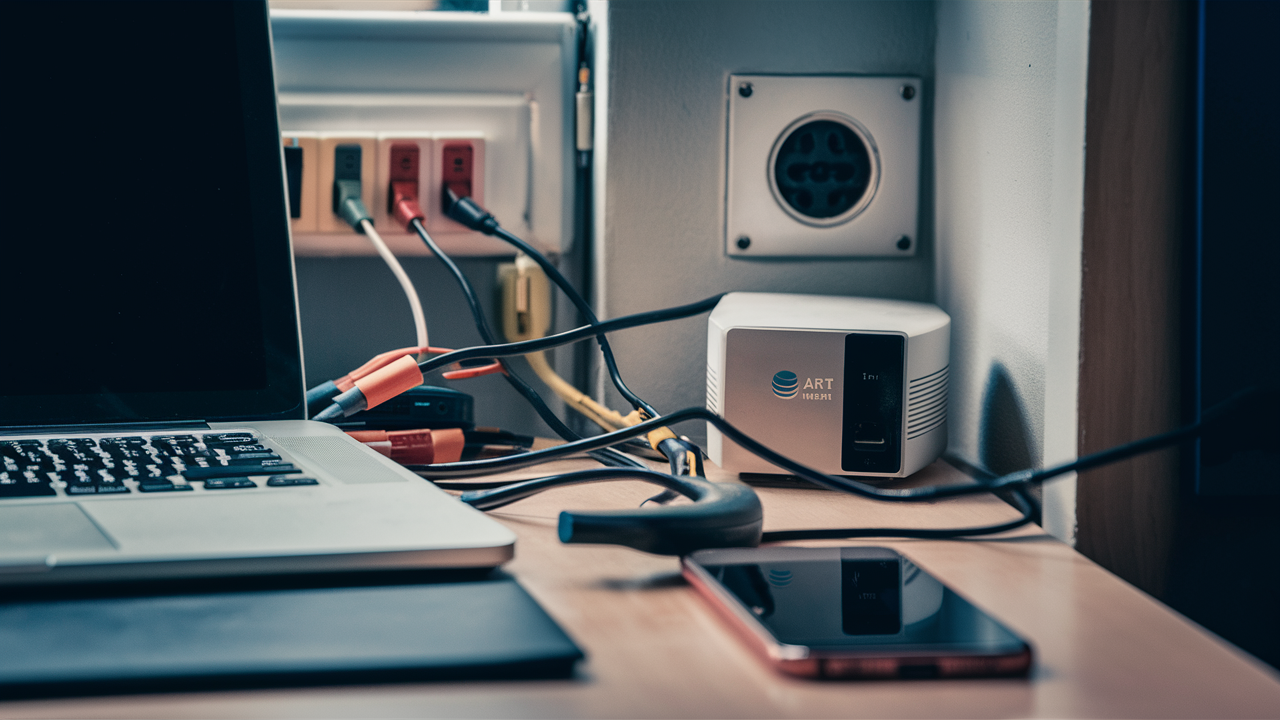Does AT&T internet require a phone jack?

Many people are concerned about whether they require a phone jack to get AT&T internet. The short answer is no, although this probably depends on the specific region, AT&T Internet does not require a phone jack. Here is a more detailed description of why there is no need for a phone jack and the various types of AT&T Internet services.
New Dynamics of Home Internet
As it was mentioned earlier, the majority of home internet service connections use the telephone network to provide connections. Such as DSL internet that operated through the use of converting analog telephone signals into digital information. Therefore, a phone jack was required to allow for the connection of such services to the home.
However, the actual use of the internet at home has evolved over the past decade in terms of how we connect to it. Cable internet and fiber optic internet use coaxial cables and fiber optic cables to transmit data, not telephone lines. The wireless home internet is also on the rise offering internet connection without any wired connection at all.
Since newer types of wired and wireless internet connections have evolved, the reliance on physical phone jacks for setting up traditional DSL internet has gone down drastically. Specifically, ATT has moved from its earlier strategic course by aiming to increase the coverage of both fiber-optic Internet and fixed wireless Internet in the country.
AT&T Fiber Internet
AT&T began offering fiber optic internet service; commonly branded as AT&T Fiber several years ago. This provides a rather fast connection to the Internet with max download/upload rates currently at 5Megabits per second in some locations.
Since AT&T Fiber is a direct connection of fiber optic to individual homes or business places, it does not rely on a phone network at all. Hence, phone jacks are inconsequential to this kind of advanced internet connectivity from AT&T.
AT&T Fiber entails connecting a fiber optic cable directly into the home and does not rely on any wiring or jacks already present in the home. Therefore, you don’t have to worry about having a phone jack for this advanced and future internet choice.
AT&T Fixed Wireless Internet
Besides, AT&T has also aimed at offering fixed wireless internet in more rural and underdeveloped areas in addition to offering lightning-fast fiber internet. The AT&T Fixed Wireless service brings home internet through a cellular tower, eliminating the need to lay physical cables.
Of course, as AT&T Fixed Wireless is a completely wireless connectivity solution providing internet from nearby towers, the company does not require physical phone jacks or wiring.
The service equipment is a small antenna/receiver mounted outside of your home and directed toward the compatible AT&T Station/Transmitter. Wiring then connects to a modem/router indoors to broadcast your home wireless network and handle device connections.
It is, therefore, a perfect solution for delivering high-performance home internet without the need for complex infrastructure, in regions that might otherwise have few or no choices. The lack of a phone jack is a bonus that AT&T Fixed Wireless subscribers appreciate.
AT&T DSL Internet
However, AT&T does still provide conventional DSL Internet service in regions where they have not yet deployed fiber optic or fixed wireless service. This older technology depends on local telephone facilities and translates analog signals that run on phone wire into Internet Protocol data.
So, unlike fiber and wireless, to get DSL internet, it is usually necessary to have an active phone jack. If there was no phone jacking connected to the nearest provider terminal box, you would not have the correct cabling path for AT&T to install the right connections for DSL.
More and more, customers do not have to concern themselves with this dated dependency on phone jacks, as AT&T continues fiber optic and wireless network expansions. But it is still something to be aware of when ordering DSL service specifically, as opposed to AT&T’s newer connection methods.
In Conclusion
In the innovation area, AT&T has concentrated on the development of fiber internet, which is one of the most advanced internet services, and has a fairly practical fixed wireless internet for home users than before. Neither of these modern connection methods involves the use of the typical telephone infrastructure or jacks.
Out of all the types of broadband connections, the current standard DSL internet service relies on telephone lines for connection. And AT&T persists in striving for readily available regions to be more than merely requiring DSL and the other outdated equipment that goes with it.
Thus, in almost all instances about new AT&T residents’ internet customers, the response to the question of whether a telephone outlet is required at the customer’s residence for the service to be established is negative. However, as AT&T continues to improve to offer faster and more reliable fiber and wireless internet to the areas marked on their map, that answer should only become even more evident in the future.
Your home network is evolving from being about telecom infrastructure to simply providing customers with the fastest and most convenient internet service.
Upgrade to faster, more reliable AT&T Fiber Internet today! Call us at +1 844-905-5002 and get connected with speeds that keep you ahead.





